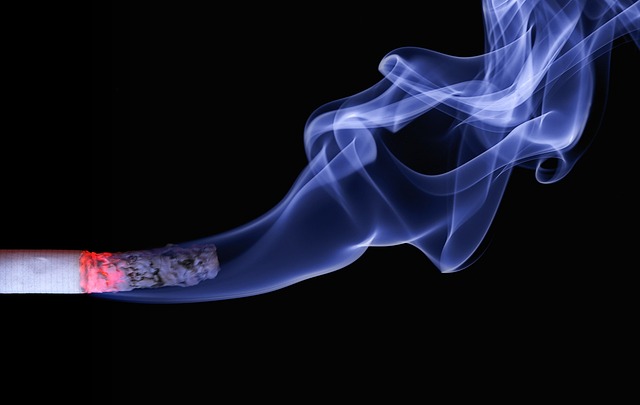Smoking and Yellow Teeth: How to Prevent Stains
Picture this: you’re getting ready for a big event, carefully selecting the perfect outfit, perfecting your hair, and adding the finishing touches to your makeup. But as you catch a glimpse of your smile in the mirror, a wave of disappointment washes over you. The telltale yellow stains on your teeth, courtesy of your smoking habit, seem to overshadow everything else. You’re not alone – countless smokers struggle with this very issue. Fear not, for in this article, we will delve into the reasons behind smoking-induced teeth stains and explore effective strategies to prevent them. So, if you’re ready to reclaim your pearly whites and flash the confident smile you deserve, let’s dive into the world of smoking and yellow teeth.
1. Understanding the Link between Smoking and Yellow Teeth
Smoking is well-known for its detrimental effects on oral health, and one of the most visible signs is yellow teeth. The link between smoking and yellow teeth is a result of the chemicals present in tobacco products and the way they interact with the teeth. Understanding this connection can provide valuable insight into the importance of quitting smoking for both oral health and overall well-being.
When a person smokes, the tar and nicotine in the tobacco smoke form a sticky residue that adheres to the enamel of the teeth. Over time, this residue accumulates and can cause teeth to become discolored, resulting in a yellow or brownish appearance. Additionally, the heat from smoking can cause the blood vessels in the gums to constrict, reducing blood flow and leading to a decrease in the delivery of essential nutrients to the teeth and gums.
- Smoking stains the teeth due to the presence of tar and nicotine in tobacco products.
- The sticky residue from smoking accumulates on the enamel, causing discoloration.
- Heat from smoking constricts blood vessels, reducing nutrient delivery to teeth and gums.
It is important to note that the effects of smoking on teeth are not easily remedied through regular brushing and flossing alone. Professional teeth whitening treatments may help to some extent, but quitting smoking is the most effective way to prevent further discoloration and damage. By , individuals can make informed decisions about their oral health and take steps towards a healthier, brighter smile.

2. The Science behind Tobacco Stains on Teeth
Tobacco stains on teeth are a common concern among smokers and tobacco users. Understanding the science behind these stains can shed light on the harmful effects of tobacco on our oral health. When tobacco is consumed, it releases a variety of chemicals that can cause discoloration on tooth enamel. Here’s a closer look at the science behind tobacco stains:
1. Tar: Tobacco smoke contains tar, a sticky substance that can easily adhere to tooth surfaces. Over time, tar accumulates and forms a yellowish-brownish stain on teeth, giving them a dull appearance.
2. Nicotine: Nicotine, the addictive substance in tobacco, is colorless initially. However, when it combines with oxygen and other chemicals present in tobacco smoke, it can turn into a yellowish substance that stains teeth. This compound can penetrate the enamel and cause deep-seated discoloration.
3. Chemical reactions: Tobacco smoke triggers chemical reactions in the mouth, leading to the formation of free radicals. These highly reactive molecules can damage tooth enamel and contribute to the staining process. Additionally, the heat from smoking may cause dehydration of the oral tissues, making them more prone to staining.
4. Plaque build-up: Tobacco use can promote the accumulation of plaque, a sticky film of bacteria on teeth. Plaque not only contributes to tooth decay and gum disease but also provides a surface for tobacco particles to adhere to, exacerbating the staining process.
Understanding highlights the detrimental effects of tobacco on our oral health. These stains not only affect our appearance but also serve as a reminder of the potential risks associated with tobacco use. Quitting smoking or using tobacco products is the best way to prevent further staining and promote a healthier smile.

3. Effective Strategies to Prevent Yellow Stains from Smoking
Smoking not only poses serious health risks but can also leave behind unsightly yellow stains on your teeth. If you’re looking for effective strategies to prevent these stubborn stains, we’ve got you covered. Follow these expert tips and say goodbye to yellow teeth caused by smoking:
1. Practice proper oral hygiene: Brush your teeth at least twice a day using a soft-bristled toothbrush and fluoride toothpaste. Don’t forget to floss daily to remove plaque and stains from between your teeth.
2. Limit your smoking: Reducing the number of cigarettes you smoke can have a significant impact on preventing yellow stains. Consider cutting back gradually or exploring smoking cessation programs to help you quit smoking altogether.
3. Rinse your mouth after smoking: After each cigarette, rinse your mouth with water or an alcohol-free mouthwash. This will help remove residue and reduce the chances of staining.
4. Avoid tobacco products that cause more stains: Some forms of tobacco, such as chewing tobacco and snuff, can cause even more pronounced yellow stains. If you’re concerned about discoloration, it’s best to stay away from these products.

4. Professional Dental Treatments for Smokers’ Teeth Discoloration
Smokers’ teeth discoloration is a common concern among individuals who smoke. However, there are professional dental treatments available that can effectively address this issue. These treatments are specifically designed to restore the natural whiteness of teeth and improve the overall appearance of the smile.
One popular treatment option is professional teeth whitening, which is performed by a dentist in a controlled and safe environment. This procedure involves the use of a bleaching agent that helps remove deep stains caused by smoking. The dentist applies the whitening gel to the teeth and activates it with a specialized light. This helps break down the discoloration and reveal a brighter, whiter smile. Professional teeth whitening is a quick and efficient way to combat smokers’ teeth discoloration.
- Dental bonding: Another effective treatment for smokers’ teeth discoloration is dental bonding. This procedure involves applying a tooth-colored resin material to the affected teeth. The resin is carefully shaped and polished to match the natural color and contour of the surrounding teeth, effectively masking the discoloration. Dental bonding is a versatile treatment option that can also be used to repair chipped or cracked teeth.
- Veneers: Veneers are thin, custom-made shells that are bonded to the front surface of the teeth. They are an excellent option for addressing severe discoloration caused by smoking. Veneers not only improve the color of the teeth but also enhance their shape and alignment. This treatment provides a long-lasting solution and can significantly transform the appearance of a smoker’s smile.
It’s important to note that should be combined with good oral hygiene practices and a commitment to quit smoking. While these treatments can effectively improve the appearance of discolored teeth, continued smoking can lead to further discoloration. Therefore, it is highly recommended to seek professional advice and support to quit smoking and maintain a healthy, bright smile.

5. Lifestyle Changes: Key to Maintaining Whiter Teeth for Smokers
When it comes to maintaining whiter teeth for smokers, making certain lifestyle changes can be the key to achieving and maintaining a brighter smile. Here are some effective strategies you can implement:
1. Regular dental hygiene: Consistent oral hygiene practices are crucial for smokers. Brush your teeth at least twice a day with a fluoride toothpaste and replace your toothbrush every three months. Additionally, don’t forget to floss daily to remove plaque and food particles that can cause staining.
2. Reduce tobacco consumption: Gradually cutting down on smoking or using tobacco products can significantly help in maintaining whiter teeth. The less exposure your teeth have to tobacco, the less likely they are to become discolored. Consider seeking professional help or using cessation aids to quit smoking altogether.
6. Home Remedies and Natural Solutions for Smokers’ Yellow Teeth
Smokers’ yellow teeth can be a frustrating and unsightly side effect of smoking. Luckily, there are several home remedies and natural solutions that can help restore the natural whiteness of your teeth. Here are some effective and easy-to-try methods:
- Oil pulling: This ancient practice involves swishing a tablespoon of coconut or sesame oil in your mouth for 15-20 minutes. This can help remove plaque and toxins that cause yellowing. Spit out the oil in a trash can afterwards, as it can clog drains.
- Baking soda: Create a paste by mixing a teaspoon of baking soda with a few drops of water. Gently brush your teeth with this mixture for two minutes, then rinse thoroughly. Baking soda’s mild abrasive properties can help remove surface stains.
- Strawberries: Mash up a ripe strawberry and mix it with half a teaspoon of baking soda. Apply the mixture to your teeth and leave it on for five minutes. Strawberries contain malic acid, which can help break down stains and brighten your teeth.
Additionally, it’s important to maintain good oral hygiene habits. Brush your teeth at least twice a day with a soft-bristled toothbrush and fluoride toothpaste. Floss daily to remove plaque from between your teeth and along the gumline. Consider using a whitening toothpaste or mouthwash that is specifically formulated to tackle smokers’ stains.
7. Expert Advice and Tips for Smokers on Oral Hygiene and Teeth Whitening
When it comes to oral hygiene and teeth whitening, smokers face unique challenges. The habit of smoking can have detrimental effects on dental health, including yellowing of teeth and an increased risk of gum disease. But fear not, we have expert advice and tips to help smokers maintain good oral hygiene and achieve a brighter smile.
1. Quit smoking: The first and most important step in improving oral hygiene and teeth whitening for smokers is to quit smoking altogether. This may be easier said than done, but it is vital for overall health and dental well-being. Seek support from healthcare professionals, join smoking cessation programs, or try nicotine replacement therapy options to increase the chances of success.
2. Brush and floss regularly: Smokers should be extra diligent in their oral hygiene routine. Brush your teeth at least twice a day using a soft-bristled toothbrush and fluoride toothpaste. Don’t forget to clean your tongue as well, as it can harbor bacteria and contribute to bad breath. Floss daily to remove plaque and food particles from between your teeth and along the gumline.
3. Use whitening toothpaste and mouthwash: Incorporate whitening toothpaste and mouthwash into your oral care routine. These products contain special ingredients that can help remove surface stains and brighten your teeth over time. Look for those specifically designed for smokers, as they may have additional benefits such as fighting tobacco-related odors.
4. Limit staining substances: Besides smoking, other substances like coffee, tea, and red wine can also stain teeth. Limit your consumption of these staining substances or use a straw to minimize contact with your teeth. Rinse your mouth with water after consuming them to help prevent stains from setting in.
Frequently Asked Questions
Q: Why do smoking and yellow teeth go hand in hand?
A: Smoking causes yellow teeth due to the chemicals present in tobacco. These chemicals, when in contact with the teeth, can lead to staining and discoloration over time.
Q: How does smoking affect dental health?
A: Smoking not only causes stains on teeth but also poses a significant risk to overall dental health. It can contribute to gum disease, tooth decay, bad breath, and even tooth loss.
Q: Can the stains caused by smoking be removed?
A: Yes, there are several options available to remove stains caused by smoking. Professional teeth whitening treatments, such as laser whitening or bleaching, can effectively remove these stains and restore the natural color of your teeth.
Q: Are there any preventive measures to avoid yellow teeth while smoking?
A: While quitting smoking is the most effective way to prevent yellow teeth, there are some preventive measures smokers can take. Regular brushing, flossing, and using mouthwash can help minimize staining. Additionally, reducing the intake of staining agents like coffee, tea, and red wine can also make a difference.
Q: Can over-the-counter whitening products effectively remove tobacco stains?
A: Over-the-counter whitening products can help reduce tobacco stains to some extent. However, they may not be as effective as professional treatments. It’s best to consult with a dentist to determine the most suitable whitening option for your specific needs.
Q: How long does it take for smoking stains to appear on teeth?
A: The time it takes for smoking stains to appear on teeth can vary from person to person. However, most smokers start to notice discoloration within a few months to a year of regular smoking.
Q: Are electronic cigarettes a safer alternative for preventing yellow teeth?
A: While electronic cigarettes may be considered a safer alternative to traditional cigarettes in terms of reducing some health risks, they can still contribute to yellow teeth. The nicotine and other chemicals present in e-cigarettes can also stain teeth over time.
Q: Can professional teeth cleanings help remove smoking stains?
A: Yes, professional teeth cleanings performed by a dentist or dental hygienist can help remove surface stains caused by smoking. However, for deeper stains, professional whitening treatments may be necessary.
Q: Is teeth whitening a permanent solution for smoking stains?
A: Teeth whitening treatments are not permanent, and the longevity of the results can vary depending on individual habits and oral care. Regular follow-up appointments with your dentist, along with maintaining good oral hygiene, can help prolong the effects of teeth whitening.
Q: How can I maintain white teeth after quitting smoking?
A: Maintaining white teeth after quitting smoking involves following good oral hygiene practices. This includes regular brushing, flossing, and using mouthwash. Avoiding tobacco products and limiting the consumption of staining agents like coffee and tea can also help preserve the whiteness of your teeth.
Wrapping Up
In conclusion, smoking and yellow teeth go hand in hand, but there are effective ways to prevent those unsightly stains. By maintaining good oral hygiene practices, such as regular brushing and flossing, you can significantly reduce the impact of smoking on your teeth. Additionally, limiting your tobacco and caffeine intake, as well as seeking professional dental cleanings, can help restore and maintain a brighter smile. Remember, prevention is key when it comes to combating the consequences of smoking on your dental health. So take charge of your oral care today and enjoy a brighter, stain-free smile tomorrow.






